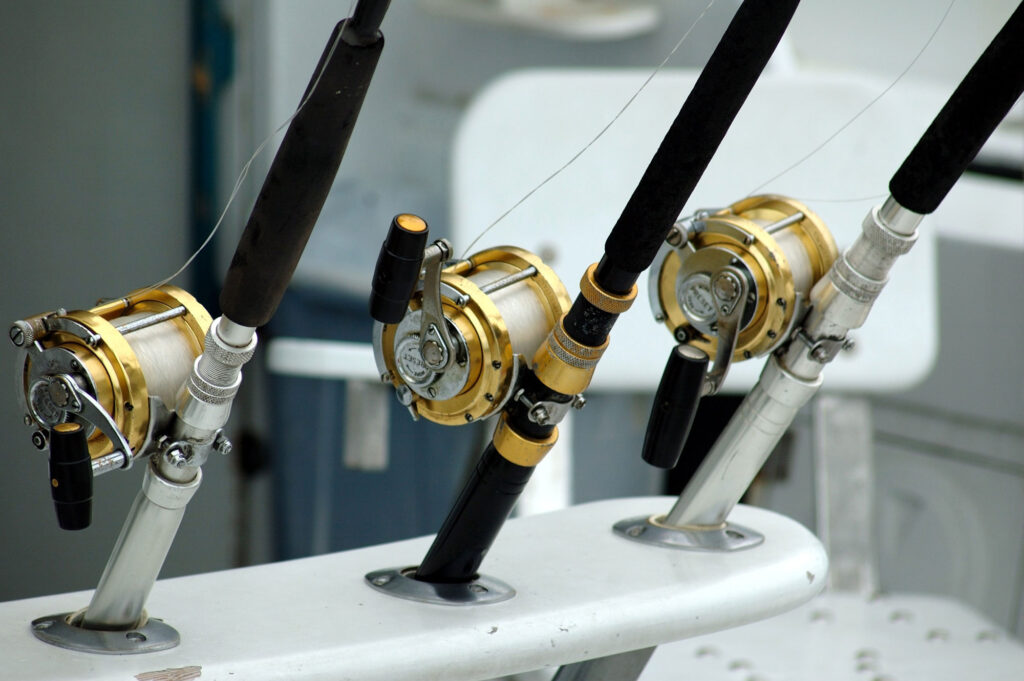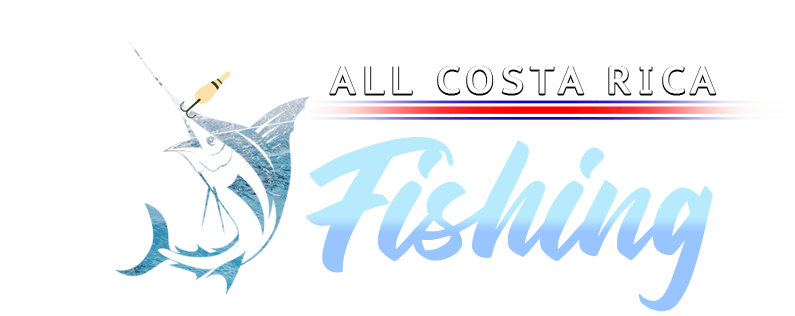
Tips and Tricks for Catching Big Fish with a Spinning Reel in Sports Fishing Costa Rica
Sports fishing in Costa Rica offers a great opportunity for experienced anglers and novices alike to catch some impressive fish with a spinning reel.
With the right technique and knowledge, you can have a successful day out on the water and maybe even land yourself a big one!
Here are some tips and tricks to help ensure you make the most of your trip:
1. Use light tackle when fishing in Costa Rica.
Many of the larger gamefish prefer heavy tackle, but smaller targets such as jacks, snappers, barracuda and tarpon can be caught on lighter line and rods.
Look for rods rated for 8-12lbs test for best results.
For best results, use a spinning reel when fishing in Costa Rica.
Spinning reels are lightweight and offer good control when casting and retrieving lures or jigs.
They also allow for a greater variety of line types, such as braid and fluorocarbon, which can be advantageous when targeting larger species.
Fluorocarbon is extremely sensitive to the slightest nibble and offers better abrasion resistance than other lines, making it great for pulling bigger fish out of weeds or heavy structure.
Additionally, spinning reels have a smooth drag system that can be adjusted throughout the fight to keep the line tight but not over-tighten and break the line due to sudden pressure or tippet size changes.
All these features combined make spinning reels an ideal choice for sports fishing in Costa Rica.
2. Pay attention to your bait selection.
Live bait is often more productive than lures when it comes to larger gamefish due to their natural instinctive behavior around prey items.
Smaller predators such as snapper may be more readily attracted to lures or jigs, however.
Be sure you have an assortment of both live baits and lures at hand when fishing in Costa Rica’s waters.
When it comes to bait selection, live bait is often the go-to choice when targeting larger gamefish in Costa Rica.
Baitfish such as sardines, anchovies, mackerel, and herring are all excellent options.
While lures or jigs can also be used to entice big fish, live bait has a distinct advantage due to its natural smell, appearance and movement in the water.
Live bait can be presented in a variety of ways to ensure success, such as on a jighead rig, free-lined with no weight at all or under a float for long casts.
Be sure to use the proper size hook for your particular bait type; too small of a hook won’t hold the bait securely or effectively enough while too large may cause unnecessary damage to the fish’s mouth upon removal.
When fishing with lures or jigs in Costa Rica’s waters, selecting the right color and style is key.
Natural colors like silver and gold mimic common prey items of many gamefish and should be used in clear water conditions.
Cloudy water tends to bring out brighter colors such as chartreuse and pink that can attract more attention from predatory fish species.
Additionally, selecting the right action when fishing with lures or jigs is important.
A fast twitch retrieve works best for smaller species like snapper while a slower jerk and pause motion will elicit strikes from larger predators such as marlin or sailfish.
With careful consideration of both live baits and lures/jigs during your next sports fishing trip in Costa Rica, you will increase your chances of landing that big one!
3. Look for structure when searching for fish.
A variety of structure types exist throughout coastal waters that provide good cover, ambush points, and feeding areas for a variety of species; reefs, drop offs, weed beds and mangroves are all excellent places to target when looking for big fish in Costa Rica’s coastal waters.
Structure is essential when searching for fish in Costa Rica.
Look for points, drop offs, ledges, and channels to target large species such as marlin or sailfish.
Reefs are a great place to search for snapper, jacks, barracuda and other smaller species due to their abundance of prey items.
Weed beds offer excellent cover for bass and tarpon while mangroves provide shelter from the current and predators to a variety of smaller baitfish.
In addition, look for signs of bait activity like surface disturbances or diving birds as these indicate where fish may be lurking below the surface.
Concentrate your efforts around structure wherever possible; different depths and areas can hold fish at different times so be sure to mix up your retrieves accordingly.
4. Watch your line tension!
Whether using heavy or light tackle when targeting larger gamefish, it’s important to keep an eye on how much pressure is being applied with each pull of the rod so that you don’t pull too hard which could break the line or scare away potential strikes before they happen!
It is imperative to pay close attention to the tension of your line when attempting to catch large gamefish in Costa Rica.
Too much tension can result in a broken line or spooked prey before they have a chance to take the bait.
As such, it is important to be mindful of the amount of pressure being applied to the line with each tug of the rod.
When fishing with heavy tackle, such as for marlin or sailfish, it’s best to apply light pressure for long periods of time, rather than rough and jerky motions.
This will give the fish more time to decide if they want to take the bait and will also prevent you from overwhelming them with too much line tension.
When using light tackle for smaller species such as snapper or bass, slightly more pressure can be applied while still being aware not to pull too hard and scare away potential catches.
A gentle tugging motion is usually enough most times, however this should be adjusted depending on conditions and types of prey present.
It’s also important to remember that different lengths of line require different amounts of pressure due to its elasticity; longer lines are typically easier on your equipment since they absorb more shock than shorter lines do during strikes.
Ultimately, by watching your line tensions closely when fishing in Costa Rica’s waters you can increase your chances at success on your next outing!
5. Learn how to work a lure properly if targeting smaller species
Having proper retrieve speed is essential in order to trigger strikes from these fast-moving predators!
When targeting smaller species such as jacks or mackerels with artificials, it is important to know how to properly work a lure.
This includes having the correct retrieval speed and proper technique in order to trigger strikes from these fast-moving predators.
Working a lure too quickly will make it appear unnatural and can scare off potential catches.
The key is to find the right balance between speed and presentation that mimics natural prey movements.
Changing speeds is also an important factor for successful lure fishing; by varying your retrieve speed you can test out different methods of enticing fish into striking.
Start slowly at first, then increase the speed every few seconds so that you don’t overwork a spot as fish often require more time than expected to take the bait.
Utilizing pauses during your retrieve can also help get those hesitant fish interested in your offering, as they will assume there’s an easy meal waiting if they just take their time.
In addition, selecting lures based on the species you are targeting is essential when trying to maximize success with artificials.
For example, jigs are great for catching snapper, groupers and other bottom dwelling species due to their quick sinking qualities; whereas poppers and surface plugs work well for gamefish such as barracuda, tarpon and jacks due to their ability to attract attention from a distance.
It’s always best practice to use lures that closely resemble natural food sources found in the area; this increases the chances of stimulating a predatory strike from larger gamefish while providing an attractive meal for smaller species.
By learning how to properly work your lures when fishing Costa Rica’s coastal waters, you’ll be able to target a variety of species with increased effectiveness!
Remember: keep an eye on your line tension, vary speeds regularly and choose lures based on what’s being targeted – these tips can help guarantee success on any given outing!
6. Don’t forget about surface trolling
This technique involves slow trolling along open waters with artificial lures such as poppers or spoons; this method can be deadly effective if used correctly!
Surface trolling is a common technique used to target gamefish such as tarpon, jacks and barracuda in Costa Rica.
This technique involves slow trolling along open waters with artificial lures such as poppers or spoons.
The goal is to present an enticing offering that will encourage predators to strike.
When surface trolling it’s important to maintain a steady speed while keeping the lures close to the surface; this will provide an inviting presentation that can be seen by fish from a distance.
Additionally, varying retrieve speeds and pausing periodically are key factors in ensuring success with this technique – as triggers like these can help draw curious fish into striking your offering.
For best results, it’s important to choose the right lures for the job.
Poppers and spoons are great choices due to their erratic patterns when retrieved slowly, which help simulate natural prey movements.
When targeting larger gamefish such as tarpon or jacks, using larger poppers and spoons that imitate baitfish will increase the chances of getting a strike since they are more visible and attractive at longer distances.
Surface trolling is an effective way of targeting gamefish when fishing in Costa Rica’s coastal waters – but it requires patience, practice and most importantly – the right gear!
With just these few tips you’ll be well on your way to catching some big ones!
7. Stay alert
Never assume that just because you haven’t seen any fish yet that there aren’t any around – always pay attention to what’s going on around you so that you don’t miss out on any potential bites!
When fishing in Costa Rica, keep an eye out for signs of increased surface activity such as baitfish jumping or birds diving into the water.
This can be an indication that predators are in the area and ready to strike – so it’s important to keep your lures in the water and ready to go!
Additionally, pay close attention to your line tension; if it changes from its regular slack state, this could indicate a fish nibbling at your bait.
When targeting gamefish like tarpon and jacks, look for water disturbances such as swirling or bubbling – these can be indicators of aggressive feeding behaviour which is often followed by a strike.
Also, remember to cast towards structure such as rocks or ledges; these provide natural hiding spots for larger fish that may be looking for their next meal.
Finally, use the right tackle; when targeting gamefish it’s important to have quality spinning gear on hand that won’t fail you during a big fight.
Choosing rods with high drag ratings and line weights that match the type of species being targeted will increase your chances of landing those trophy catches.
By taking note of all these factors when fishing in Costa Rica’s coastal waters, anglers can guarantee success on any given outing!
Be alert, choose quality equipment and remember to vary retrieve speeds – these tips will help ensure an enjoyable day out on the water!
With these tips and tricks in mind, you can make sure you get the most out of sports fishing in Costa Rica while having an enjoyable time out on the water! Good luck out there!
